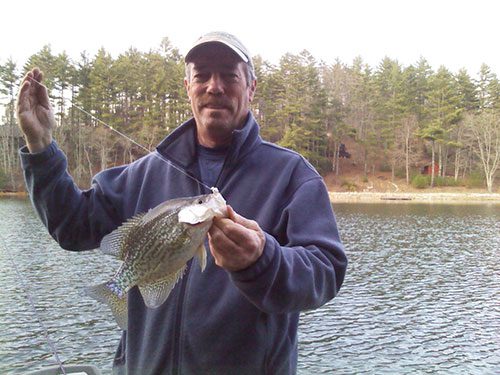Everybody that fishes knows that the only antidote for April 15th is that spring has sprung and all fishes are hungry, willing and accessible. Almost anyone who wets a line can be a hometown hero this time of the year. Wayward cold fronts being the exception, most days on the water will add to our collective memories of personal bests, heavy limits, fish fry supplying outings and novice supporting ventures for all things piscatorial. It’s a time when I try and get my dad out, as an active 91 year old, he still enjoys and is proficient at catching fish. His favorite, for several reasons, is the crappie. Growing up in Eastern North Carolina we had access to some of the best crappie fishing anywhere. My granddaddy owned a farm and dad built a pond of about eight acres when I was nine or ten years old, on a small creek bottom that ran below the tobacco barns. We lived on the edge of town and a short two-mile bike ride put me in crappie heaven. Many a day I would ride to the ballpark, just upstream, practice baseball and then ride down to the pond and lay out stringers of fish for supper. We had a ten-foot johnboat that, with a sculling paddle, I could cover every inch of the pond and knew where the best holes lay that held schools of crappie.

Today, fishing for crappie on mountain lakes is not as easy as the old pond days. Fontana has TVA to deal the deathblow to most extended periods of proper water levels that if consistent, would enhance finding and procreating our crappie population. Just when the stars align, fish concentrate around the little bit of cover available and drop eggs and fertilizer, but then the eight to ten foot cover becomes twenty to thirty foot cover and they tend to scatter with only a brief window to socialize. I remember a couple of years ago I heard the wildlife folks pulled up crappie in their nets from almost 100 foot depths. That is a long way down to fish a one sixteenth oz jig. On the positive side, crappie are known for being very productive so here’s to hoping this year yields a bumper crop of these tasty buggers. Take advantage of the warming weather and calmer days. I can feel that little tick that precedes an upcoming fish fry. I may just scale a few and chance the bones this year. Later, Capt. James
Capt. James McManus is the Owner of 153 Charters. Give him a call for a great day of boat fishing!
